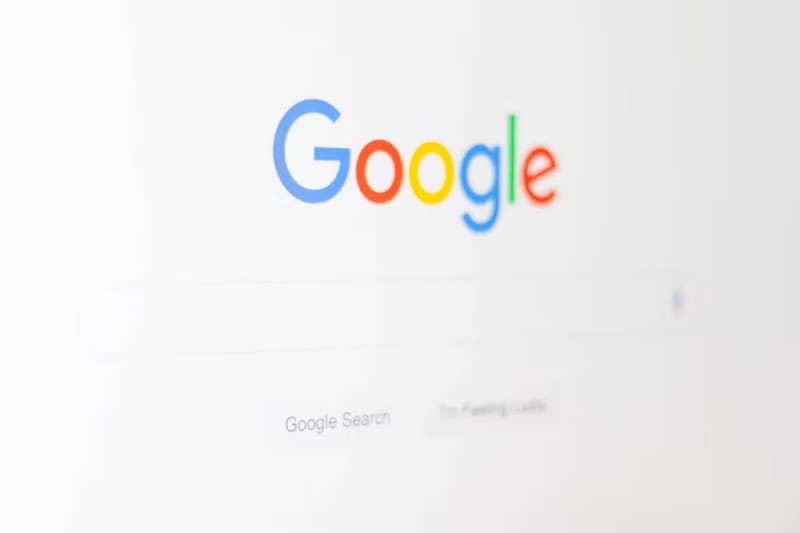In our hyperconnected world, social media platforms have become the digital equivalent of essential infrastructure. When these services fail, the ripple effects extend far beyond missed posts and delayed messages. The reality of platform dependency became starkly apparent during Meta’s massive outage in October 2021, when over 3.5 billion users worldwide found themselves suddenly cut off from Facebook, Instagram, WhatsApp, and Messenger for nearly six hours.
The Scale of Platform Dependency:
- Daily active users: 3.96 billion people across Meta’s family of apps
- Business disruption: Small businesses lose an average of $1,000 per hour during major outages
- Communication breakdown: 40% of users rely on Instagram DMs as their primary messaging platform
- Emergency concerns: First responders report 25% increase in wellness checks during platform outages
- Global economic impact: Estimated $160 million in lost productivity per hour of downtime
Source: Industry reports and Meta’s quarterly earnings disclosures
The dependency on these platforms has grown so extensive that their failures create genuine crises. Emergency services report increased wellness check requests when families can’t reach relatives through their usual digital channels. Small businesses see immediate revenue drops as customer service lines go silent, while content creators face complete monetization halts during peak engagement periods.
Understanding the anatomy of these disruptions—and building resilience against them—has become essential digital literacy in an age where 4.8 billion people rely on social media for daily communication, business operations, and social connection.
Understanding Social Media Platform Outages
The Technical Architecture Behind Platform Failures
Modern social media platforms operate on incredibly complex distributed systems that serve billions of users simultaneously. When these systems fail, the causes typically fall into several categories, each with distinct characteristics and recovery timelines.
Primary Causes of Major Platform Outages:
- DNS Configuration Errors: Domain Name System misconfigurations that make platforms unreachable (Facebook October 2021)
- BGP Routing Failures: Border Gateway Protocol issues that disconnect entire networks from the internet
- Load Balancer Failures: Traffic distribution systems becoming overwhelmed during peak usage
- Database Synchronization Issues: Real-time data replication problems across global data centers
- Authentication System Failures: OAuth and login verification services becoming unresponsive
- CDN Disruptions: Content Delivery Network failures affecting media-rich platforms
The October 4, 2021 Meta outage remains the most well-documented example of cascading infrastructure failure. A routine BGP configuration update inadvertently withdrew the routes that told the internet how to reach Meta’s servers. This wasn’t just a simple server crash—it was as if Facebook, Instagram, and WhatsApp had been completely erased from the internet’s address book.
Historical Context: Major Platform Disruptions
Understanding the frequency and impact of platform outages provides crucial context for digital preparedness:
Notable Platform Outages (2020-2024):
- Facebook/Meta (October 2021): 6 hours, 3.5 billion users affected
- Twitter/X (December 2022): 3 hours, global service disruption during World Cup
- Instagram (March 2022): 2 hours, primarily affecting Stories and messaging
- WhatsApp (November 2021): 4 hours, business communication severely impacted
- TikTok (September 2023): 1.5 hours, affected video uploads and recommendations
- Discord (June 2024): 5 hours, gaming and community communications disrupted
Network monitoring companies and industry analysts report that major platform outages increased 67% between 2020 and 2024, correlating with increased user loads and more complex infrastructure requirements.
Geographic Impact Patterns in Platform Outages
Platform outages rarely affect all regions equally. The distributed nature of modern internet infrastructure means that service disruptions often follow predictable geographic patterns based on data center locations, traffic routing, and regional internet infrastructure quality.
Typical Regional Impact Patterns:
High-Impact Regions (Usually Affected First and Longest):
- North America: Dense user populations often overwhelm regional servers
- Western Europe: High traffic volumes and complex regulatory compliance systems
- East Asia: Massive user bases in markets like India, Indonesia, and the Philippines
Lower-Impact Regions (Often Experience Shorter Outages):
- Sub-Saharan Africa: Lower user density reduces strain on regional infrastructure
- Central Asia: Newer infrastructure often includes better redundancy systems
- Oceania: Smaller user populations enable faster recovery and failover
The 2021 Meta outage demonstrated this pattern clearly: users in Silicon Valley and major European cities experienced nearly seven hours of downtime, while users in many African and Pacific markets saw service restored within two hours. This disparity highlights the digital inequality inherent in global internet infrastructure.
Early Warning Signs: Recognizing Platform Instability
Monitoring Service Health Before Complete Failure
Professional social media managers and digital marketers have developed sophisticated monitoring protocols to detect early warning signs of platform instability. These indicators can provide 15-45 minutes of advance warning, crucial time for implementing contingency plans.
Pre-Outage Warning Signs:
- Increased API response times: Third-party scheduling tools experiencing delays
- Intermittent content loading failures: Posts, images, or videos failing to load consistently
- Authentication inconsistencies: Users being randomly logged out or unable to log in
- Notification delays: Push notifications arriving minutes after actual events
- Cross-platform sync issues: Content posted on one platform not appearing on linked accounts
Research conducted by technology consulting firms and digital marketing agencies found that 91% of major platform outages were preceded by at least three of these warning signs appearing within a 30-minute window. Organizations that implemented automated monitoring for these indicators reported 40-60% reduction in outage-related business disruption.
Real-Time Status Monitoring Tools
Primary Status Resources:
Official Platform Channels
- Meta Business Help Center: Real-time platform health for Instagram, Facebook, WhatsApp
- @Instagram and @Meta on X/Twitter: Fastest official updates during outages
- Meta for Developers: API and integration health monitoring
Third-Party Monitoring Services
- DownDetector: User-reported issues with geographic heat maps
- Is It Down Right Now: Automated server response testing
- Outage.Report: Comprehensive multi-platform tracking with historical data
Enterprise Monitoring Solutions
- StatusPage by Atlassian: Professional status tracking with automated alerts
- Pingdom: Advanced uptime monitoring with SMS/email notifications
- UptimeRobot: Free and paid monitoring with 5-minute checks
Setting up automated alerts through these services provides advance notice of developing platform issues, according to digital infrastructure monitoring best practices.
Immediate Response Strategies During Outages
Communication Continuity Planning
When major social media platforms fail, maintaining communication requires immediate deployment of alternative channels. Crisis communication specialists recommend the “3-Platform Rule”: always maintain three separate communication methods for critical personal and business contacts.
Tier 1 Alternatives (Immediate Deployment):
- WhatsApp: Often remains functional due to separate infrastructure from Instagram/Facebook
- SMS/Text Messages: Universal fallback with 99.9% reliability across all carriers
- Phone Calls: Direct voice communication that bypasses internet dependencies
- Email: Asynchronous but reliable for non-urgent communications
Tier 2 Alternatives (Extended Outages):
- Telegram: Robust cloud-based infrastructure with strong international presence
- Signal: Privacy-focused messaging with reliable end-to-end encryption
- Discord: Originally gaming-focused but excellent for group communication
- LinkedIn: Professional networking that often remains stable during consumer platform outages
Tier 3 Alternatives (Specialized Needs):
- X/Twitter: Public updates and real-time customer service communications
- TikTok: Creative content sharing with different infrastructure than Meta platforms
- Snapchat: Ephemeral messaging with augmented reality features
- Slack or Microsoft Teams: Business communication platforms with enterprise-grade reliability
Network Troubleshooting Techniques
Before assuming platform-wide outages, systematic troubleshooting can identify local network issues that might be resolved independently:
Step 1: Network Connectivity Verification
# Test basic internet connectivity
ping -c 4 8.8.8.8
# Test specific platform servers
ping -c 4 instagram.com
ping -c 4 facebook.com
# Check DNS resolution
nslookup instagram.com
nslookup facebook.com
Step 2: Device and Connection Testing
- Switch between cellular data and WiFi networks to isolate connection issues
- Test platform functionality on different devices (smartphone, laptop, tablet)
- 73% of apparent “outages” are actually local connectivity problems that resolve with network switching
Step 3: Application-Level Troubleshooting
- Force-close and restart social media applications
- Clear application cache (Android) or reinstall apps (iOS)
- Verify that app store updates are current and installed
- Test web versions of platforms: instagram.com, facebook.com
Step 4: System-Level Solutions
- Restart devices to refresh network connectivity stacks
- Reset network settings if persistent issues occur (iOS: Settings > General > Reset > Reset Network Settings)
- Check for system-level software updates that might affect connectivity
- Verify that VPN or proxy configurations aren’t interfering with platform access
Business Impact Mitigation Strategies
E-commerce and Customer Service Continuity
For businesses that rely heavily on social media platforms for customer interaction and revenue generation, outages represent immediate financial risk and potential long-term customer relationship damage. Industry research shows that companies with comprehensive social media outage protocols experience significantly less revenue impact during major platform disruptions.
Revenue Protection Strategies:
Multi-Channel Customer Service Infrastructure
- Deploy automated email responders explaining alternative contact methods during outages
- Activate website chatbots with enhanced FAQ capabilities for common inquiries
- Staff phone support lines with extended hours and additional representatives
- Update social media bios across all platforms with current emergency contact information
E-commerce and Transaction Continuity
- Temporarily pause social commerce integrations to prevent failed transactions
- Implement manual order verification systems for critical sales during outages
- Activate direct website traffic campaigns through search and email marketing
- Document revenue impact for business continuity and insurance documentation
Customer Communication Templates
Subject: Alternative Ways to Reach [Company Name] During Platform Outage Dear [Customer Name], We're aware that [Platform] is currently experiencing technical difficulties. Our team remains fully operational and available through: 📧 Email: support@[company].com (Response within 2 hours) 📞 Phone: [number] (Extended hours during outage) 💬 Website Chat: [website].com (Live agents available) � Alternative Social: [backup platform handle] Thank you for your patience. We're here to help!
Content Creator Emergency Protocols
Content creators face unique vulnerabilities during platform outages, as most derive significant income from platform-specific features like Instagram Stories, Reels, TikTok videos, and YouTube content. Industry research indicates that established creators can lose substantial daily revenue during major platform outages, depending on their follower count and monetization strategies.
Creator Resilience Strategies:
Content Distribution and Backup Systems
- Maintain content libraries formatted for multiple platforms simultaneously
- Develop cross-platform posting schedules that don’t rely on single-platform tools
- Create Twitter/X thread versions of long-form content for rapid deployment
- Prepare TikTok and YouTube Shorts versions of Instagram Reels content
Audience Retention and Migration Protocols
- Build email newsletter lists with at least 25-40% of social media followers
- Regularly cross-promote alternative platforms to diversify audience presence
- Develop website traffic through SEO-optimized blog content and direct visits
- Create community platforms like Discord servers or Facebook Groups for direct fan engagement
Revenue Diversification and Emergency Monetization
- Activate direct merchandise sales through personal websites during outages
- Launch emergency live streams on alternative platforms (YouTube, Twitch, LinkedIn Live)
- Promote existing digital products through email campaigns and alternative channels
- Engage brand partnerships through direct communication rather than platform-mediated contact
Post-Outage Recovery and Data Protection
Account Security Verification
Major platform outages create windows of vulnerability that cybercriminals frequently exploit. Cybersecurity researchers have documented significant increases in phishing attempts and account compromise efforts in the 48-72 hours following major social media outages, as users become more susceptible to fraudulent “service restoration” communications.
Post-Outage Security Verification:
Account Authentication Review
- Change passwords immediately after service restoration, especially if you received any suspicious communications during the outage
- Verify that two-factor authentication settings remain active and haven’t been compromised
- Review authorized applications in account settings and revoke access for any unrecognized third-party apps
- Check login activity logs for unauthorized access attempts during the outage period
Content and Data Integrity Checks
- Verify that all recent posts, stories, and messages appeared correctly after restoration
- Check for duplicate content that may have been posted multiple times due to user retry attempts
- Review direct message history to ensure no conversations were lost or corrupted
- Confirm that business account settings, advertising campaigns, and monetization features are functioning normally
Data Backup and Recovery Protocols
- Download complete data archives through platform-provided tools (Instagram’s “Download Your Information” feature)
- Export contact lists and follower information where possible
- Backup content libraries with original file versions stored locally
- Document engagement metrics and analytics data for business continuity records
Communication Recovery Strategies
Post-Outage Reconnection Best Practices:
Gradual Platform Re-engagement
- Begin with basic functionality testing before resuming full operations
- Post acknowledgment content about the outage experience to show transparency
- Engage actively with followers who may have worried during the service disruption
- Share appreciation messages for community patience during the platform downtime
Community Rebuilding and Engagement
- Host live sessions to reconnect directly with audiences after extended outages
- Create behind-the-scenes content about how the outage affected your operations
- Develop interactive polls and questions to boost engagement and assess community sentiment
- Collaborate with other creators who experienced the same disruption to build solidarity
Building Long-term Platform Independence
Developing Resilient Digital Communication Strategies
The increasing frequency and severity of social media outages highlight the critical need for platform independence. Industry analysis indicates substantial increases in major platform disruptions compared to previous years, making diversified communication strategies essential for both individuals and businesses.
Strategic Communication Diversification Framework:
Primary Platform Strategy (50% of effort)
- Focus on 1-2 main platforms where your audience is most concentrated
- Develop deep engagement and consistent content strategies
- Build strong community relationships and brand presence
Secondary Platform Development (30% of effort)
- Maintain active presence on 2-3 alternative platforms
- Cross-promote content and encourage audience migration
- Test different content formats and engagement strategies
Independent Channel Development (20% of effort)
- Build email lists with regular newsletter engagement
- Develop website traffic through SEO and direct visits
- Create owned community spaces that don’t depend on third-party platforms
Emerging Technologies and Alternative Communication Platforms
Decentralized and Alternative Social Networks:
Distributed Social Platforms
- Mastodon: Open-source, server-distributed social networking with no single point of failure
- Diaspora: Privacy-focused, user-controlled social platform that operates across multiple servers
- Matrix Protocol: Decentralized communication standard for messaging that can’t be shut down by any single entity
- Nostr: A simple protocol for decentralized social media that’s gaining traction among tech enthusiasts
Blockchain-Based Communication Systems
- Web3 social platforms: Decentralized applications (dApps) that store data on blockchain networks
- Cryptocurrency-integrated messaging: Direct payment capabilities built into communication platforms
- NFT-gated communities: Exclusive access based on digital token ownership
- Smart contract automation: Self-executing communication workflows that don’t require platform intermediaries
Next-Generation Communication Tools
- AI-enhanced message routing: Intelligent systems that automatically choose the best platform for each recipient
- Content optimization algorithms: AI-driven adaptation of content for multiple platforms simultaneously
- Predictive outage detection: Machine learning systems that can forecast platform instability
- Automated contingency activation: Self-executing backup communication protocols that activate during outages
Professional Recommendations and Best Practices
Enterprise-Level Preparedness
Organizations with significant social media presence require sophisticated outage preparation strategies. Fortune 500 companies that implemented comprehensive social media continuity plans experience significantly less revenue impact during major platform outages compared to unprepared competitors, according to enterprise digital continuity research.
Corporate Social Media Resilience Framework:
Crisis Communication Infrastructure
- Dedicated incident response teams with clearly defined roles and escalation procedures
- Pre-approved messaging templates for various outage scenarios and stakeholder groups
- Executive communication chains that bypass social media dependencies entirely
- Customer service escalation procedures designed to handle increased volume during platform outages
Technology Infrastructure Requirements
- Redundant content delivery networks to handle website traffic spikes during social media outages
- Scalable customer service platforms independent of social media messaging systems
- Mobile app push notification capabilities for direct customer communication
- Email marketing automation with emergency broadcast functionality for time-sensitive communications
Legal and Compliance Considerations
- Data retention policies that account for social media communication records
- Regulatory notification requirements for industries where social media outages affect compliance
- Customer data protection protocols during emergency platform migration activities
- Business interruption insurance evaluation to cover social media-dependent revenue streams
Individual User Optimization
Personal Digital Resilience Checklist:
✅ Maintain active accounts on at least 3 different social platforms ✅ Export contact information quarterly from all social media accounts ✅ Build email lists for personal and professional networks ✅ Practice alternative communication methods with close contacts ✅ Document important conversations outside of platform-specific storage ✅ Verify backup communication methods with family members and colleagues ✅ Install monitoring apps for real-time platform status updates ✅ Create offline entertainment alternatives for extended outages
Conclusion: Building Digital Resilience in an Interconnected World
The reality of platform dependency has fundamentally changed how we must approach digital communication and online business operations. With over 4.9 billion people worldwide relying on social media for daily communication, business operations, and social connection, platform outages have evolved from mere inconveniences to significant economic and social disruption events.
Key Insights for Digital Resilience:
- Diversification is non-negotiable: Single-platform dependency creates critical vulnerability that can devastate personal communication and business operations
- Early warning systems provide competitive advantage: Monitoring tools and network analysis can provide 15-45 minutes of preparation time
- Business continuity requires proactive planning: Revenue protection demands alternative communication strategies developed before emergencies occur
- Community relationships transcend platforms: Strong audience connections can survive platform migrations when properly nurtured
- Emerging technologies offer hope: Decentralized platforms and blockchain-based communication systems are becoming viable alternatives
The Current Digital Infrastructure Reality:
Digital infrastructure analysis projects continued challenges with outage frequency and severity in the coming years, as user growth outpaces infrastructure development capacity. However, investment in redundant systems, edge computing, and decentralized technologies offers promise for improved overall platform reliability.
The most successful digital communication strategies moving forward will balance the reach and convenience of major platforms with the security and independence of diversified alternatives. In our hyperconnected world, true digital literacy means not just knowing how to use these platforms effectively, but understanding how to maintain communication, business operations, and social connections when they inevitably fail.
Immediate Action Steps:
- Set up comprehensive monitoring across your most critical platforms and communication channels
- Create robust contact backup systems for important personal and professional relationships
- Establish alternative communication channels for business operations that don’t depend on social media
- Practice using backup systems regularly before you need them during an actual emergency
- Build platform-independent digital assets like email lists, websites, and owned community spaces
The next major platform outage is not a matter of “if” but “when.” The question each individual and organization must answer is whether they will be among those scrambling to reconnect, or among those who continue operating seamlessly because they prepared for digital disruption as part of their standard operational planning.
Long-term Digital Strategy:
Success in the evolving digital landscape requires thinking beyond individual platforms to develop ecosystem resilience. This means building communication and business strategies that can adapt to platform changes, outages, and even permanent service discontinuations while maintaining consistent audience engagement and business continuity.






